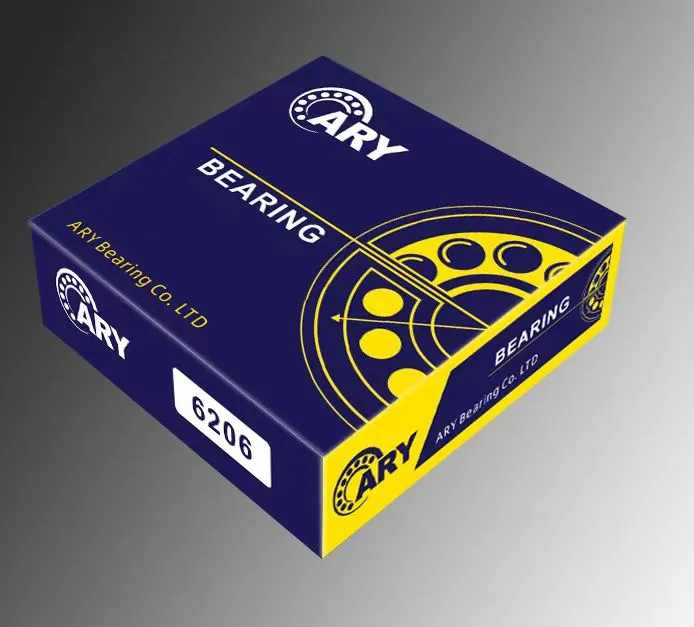
دسامبر . 07, 2024 09:54 Back to list
full complement cylindrical roller bearing
Understanding Full Complement Cylindrical Roller Bearings
Cylindrical roller bearings are essential components widely used in various machinery and equipment, providing reliable support for rotating shafts. Among the different types of cylindrical roller bearings, the full complement cylindrical roller bearing stands out due to its unique design and performance characteristics. This article delves into the features, advantages, applications, and maintenance considerations of full complement cylindrical roller bearings.
Design and Structure
A full complement cylindrical roller bearing consists of cylindrical rollers that are arranged in a way to accommodate a maximum number of rollers between the inner and outer rings. Unlike standard cylindrical roller bearings, which have a cage or separator to hold the rollers, the full complement design utilizes the entire radial space for rollers. This results in an increased load-carrying capacity, which is one of the primary factors that make these bearings desirable for high-load applications.
Typically, these bearings are constructed from high-quality steel or ceramic materials, providing excellent mechanical properties and resistance to wear. The surface of the rollers is often treated to improve durability and reduce friction, thereby enhancing overall performance.
Advantages of Full Complement Cylindrical Roller Bearings
1. Increased Load Capacity The fundamental advantage of full complement cylindrical roller bearings is their ability to support higher radial loads compared to their cage-containing counterparts. The full complement design maximizes the number of rollers, providing superior load distribution and reducing the risk of bearing failure under heavy loads.
2. Compact Design Due to their high load-carrying capacity and absence of a cage, these bearings can sometimes be designed more compactly. This is particularly beneficial in applications where space constraints require efficient use of dimensions without compromising performance.
3. Reduced Friction Although full complement bearings do not have a cage, the modern manufacturing processes and surface treatments result in smoother surfaces that can minimize friction between rolling elements. This leads to improved energy efficiency and potentially longer service life.
4. Versatility Full complement cylindrical roller bearings can be applied in various industries, including automotive, aerospace, construction, and mining. They are suitable for both high-speed and slow rotational applications, making them a versatile choice for different operational environments.
Applications
full complement cylindrical roller bearing

Due to their unique characteristics, full complement cylindrical roller bearings are widely used in numerous applications. Some common uses include
- Industrial Machinery These bearings are often used in heavy-duty machinery and equipment, such as gearboxes, conveyors, and cranes, where high load capacity is required. - Automotive Applications In vehicles, full complement bearings can be found in transmissions and differential housings, where they help manage the forces generated during operation. - Wind Turbines These bearings play a crucial role in wind turbine generators, supporting shafts subjected to large radial loads while maintaining efficiency. - Mining Equipment In the mining industry, full complement cylindrical roller bearings are employed in equipment that experiences extreme loads and harsh operating conditions, such as excavators and crushers.
Maintenance Considerations
To ensure optimal performance and longevity of full complement cylindrical roller bearings, regular maintenance is essential. Key maintenance practices include
1. Proper Lubrication Ensuring that the bearings are adequately lubricated reduces friction and wear, thus enhancing performance and lifespan. Depending on the application, lubrication intervals and types must be correctly selected.
2. Alignment Checks Regular checks for misalignment between rotating shafts and bearing supports can prevent premature failure. Proper alignment minimizes uneven load distribution.
3. Contamination Control Protecting bearings from dust, dirt, and other contaminants is vital. Implementing seals or shields can help maintain clean operation.
4. Monitoring Condition Technologies such as vibration analysis can help monitor the condition of the bearings, allowing for early detection of potential issues before they lead to failure.
Conclusion
Full complement cylindrical roller bearings offer significant advantages in high-load and demanding applications. Their unique design allows for increased load capacity, compactness, and versatility across various industries. While their maintenance requires vigilance, the performance benefits they provide make them a preferred choice in numerous mechanical systems. Understanding their features and applications can help engineers and technicians effectively select and maintain these critical components, ensuring machinery operates smoothly and efficiently.
Latest news
-
Spherical Roller Bearings Applications: Heavy Duty, Self-Aligning
NewsAug.30,2025
-
Premium Deep Groove Ball Bearings | High Speed & Reliability
NewsAug.29,2025
-
Durable Scaffolding Clamps - Secure & Reliable Tube Connectors
NewsAug.28,2025
-
Common Failures in Thrust Ball Bearings and Solutions
NewsAug.22,2025
-
How Tapered Roller Bearings Can Take Shock Loads
NewsAug.22,2025
-
Angular Bearings in High-Precision Spindles
NewsAug.22,2025
